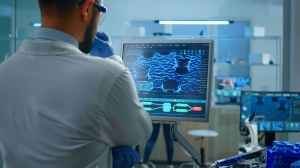Toxicology is often known as the science of safety because it assesses and analyses any harmful or potentially harmful effects of substances, chemicals and situations on living beings and the environment. A predictive toxicology assay is one critical tool used by toxicologists to ensure data relating to this is safe. These assays use scientific knowledge to forecast what potential harm various substances can cause. Therefore, predictive toxicology assays, completed by experts such as Gentronix, play a vital role in protecting the public and the environment.
What are predictive toxicology assays?
Predictive toxicology assays are tests done in a laboratory designed to assess whether a substance has the potential to be toxic. Toxicology testing takes place in the laboratory to ensure a substance's safety and efficacy are assured before it is released into the environment or used in any products.
There are a variety of productive toxicology assays which use various methods. These may include computer models, cell cultures and animal studies. Testing will be tailored to the type of substance being developed and its required use in the wider world. Researchers must be able to predict how substances might interact with biological systems to avoid causing them harm in a number of settings.
Why are predictive toxicology assays important for people and the environment?
There are various reasons that predictive toxicology assays are vital, including:
- Safety first - If a substance is developed and any potential hazards are identified early, it can prevent harmful substances from damaging the environment or consumers.
- Reduces animal testing - Animal studies have previously formed a vital base for toxicology testing. However, the development of predictive assays helps to reduce the reliance on animal testing meaning risks to public health can be minimised without the obvious ethical concerns related to experimenting on animals.
- Efficiency and cost-effectiveness - When a company is developing a new chemical or treatment, predictive toxicology testing can help inform developers whether development needs to be stopped due to potentially harmful impacts. It can also help determine whether the substance needs to be tweaked to reduce harm before development continues. This can help companies react to changes in development more quickly and save money on developing products that will never meet safety standards.
- Demographic safety - Predictive toxicology assays can also help researchers understand the impact on different individuals. For example, age, genetics and exposure levels may influence toxicity differently. Having the right information allows companies to tailor safety measures based on different demographics. This type of testing can help identify particularly at-risk groups, such as pregnant women and children and those with pre-existing health conditions.
The positives of predictive toxicology
With all these benefits, predictive toxicology has an incredibly positive impact. It can help set safe exposure limits for chemicals and treatments and help pharmaceutical companies, cosmetic companies, and industrial chemical developers design safer products.
What's next in predictive toxicology?
As we understand more than ever about the world, scientific development will continue to evolve. New technologies, such as computer modelling and AI, can help enhance the efficiency and accuracy of these tests. In the future, we are likely to have even more tools for safeguarding the environment and human health by predicting what substances could harm others. This can only be a good thing, not only for those worried about the future of our planet and its ecosystems but also for those who will benefit from a range of medical treatments and advancements that have been developed in the safest and most effective way possible.






